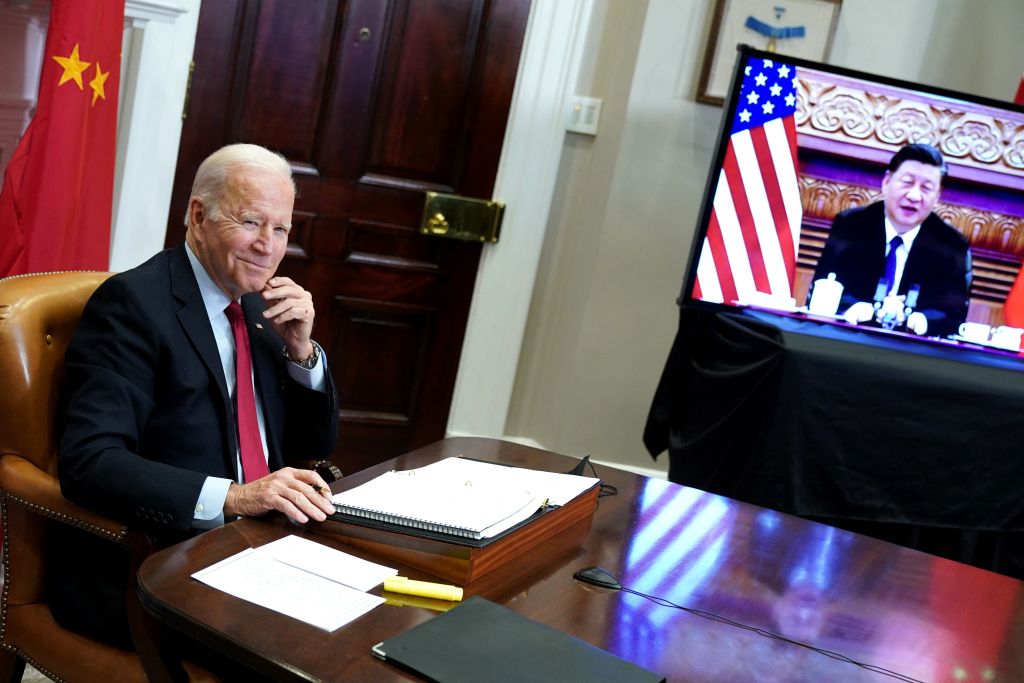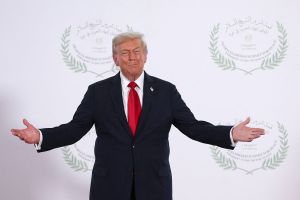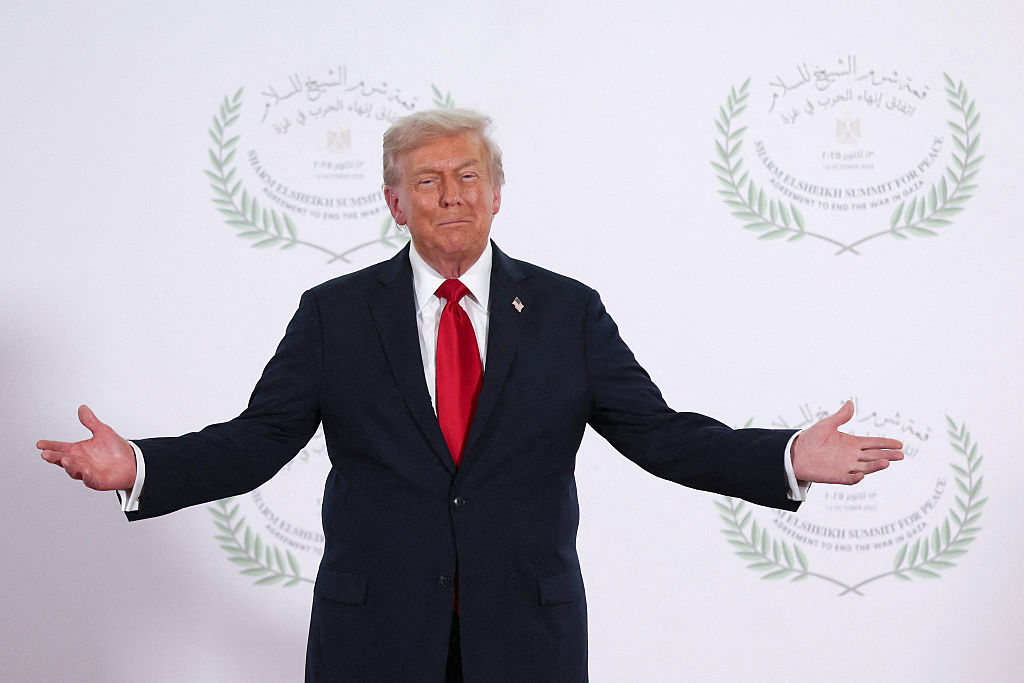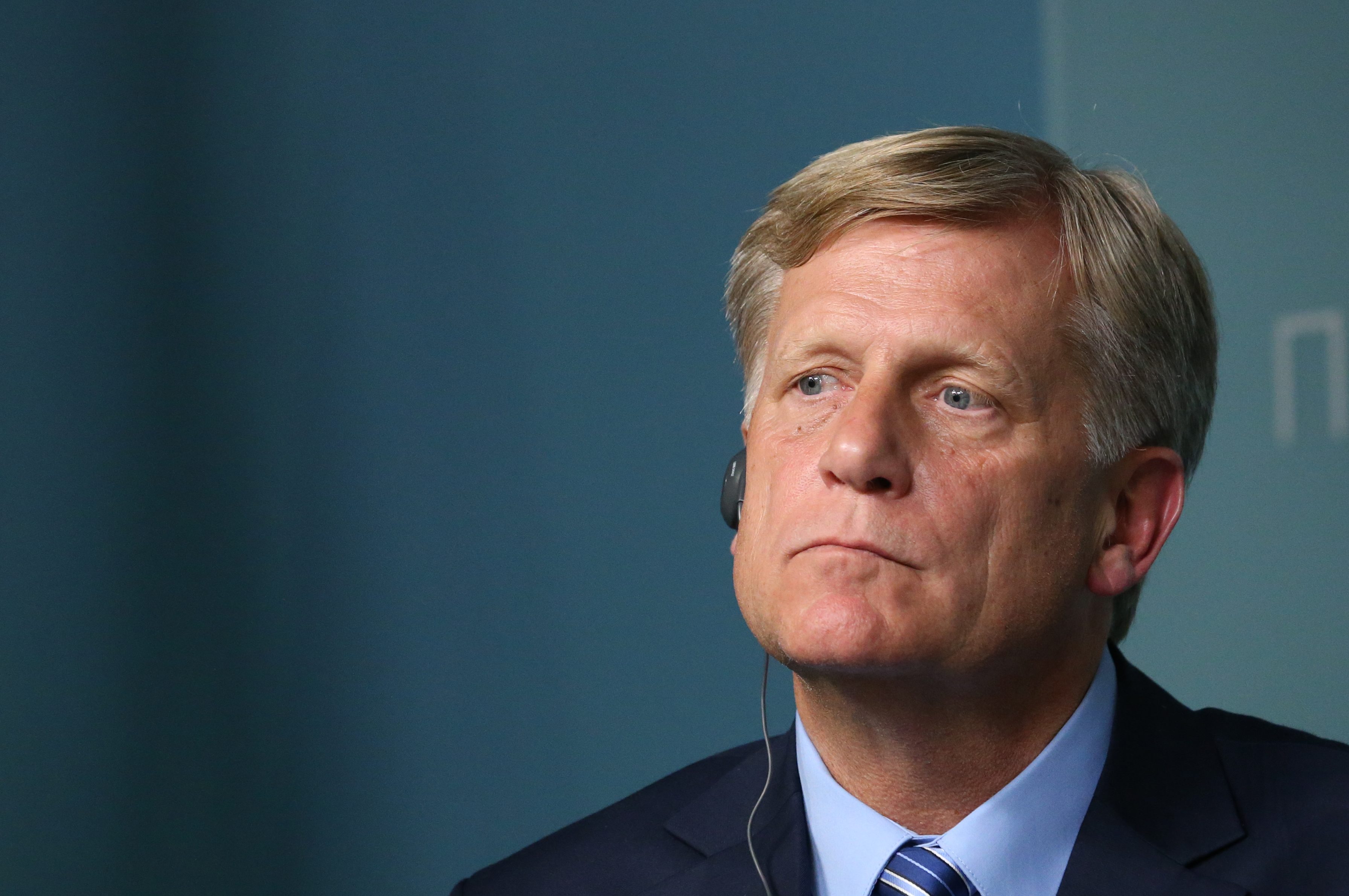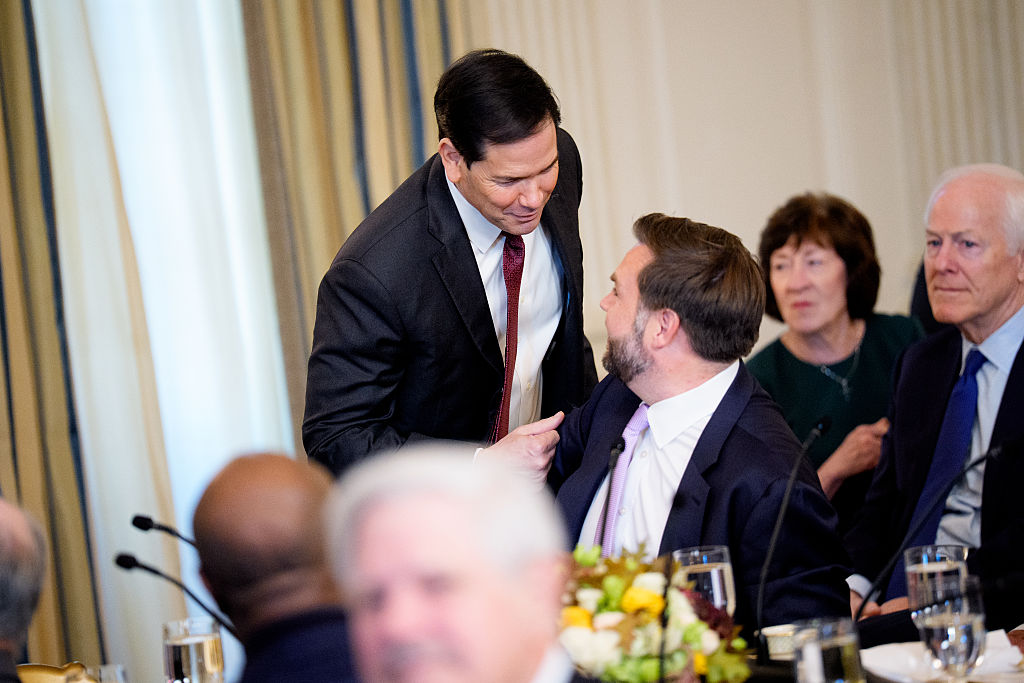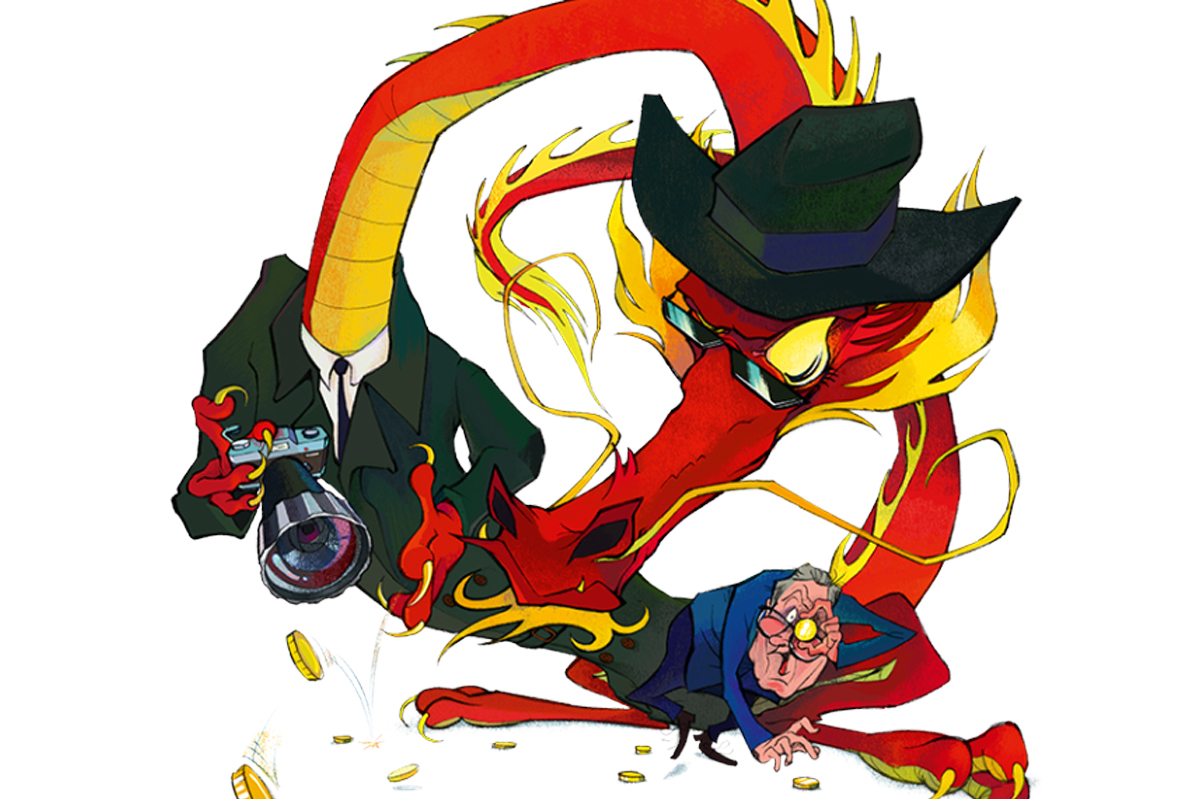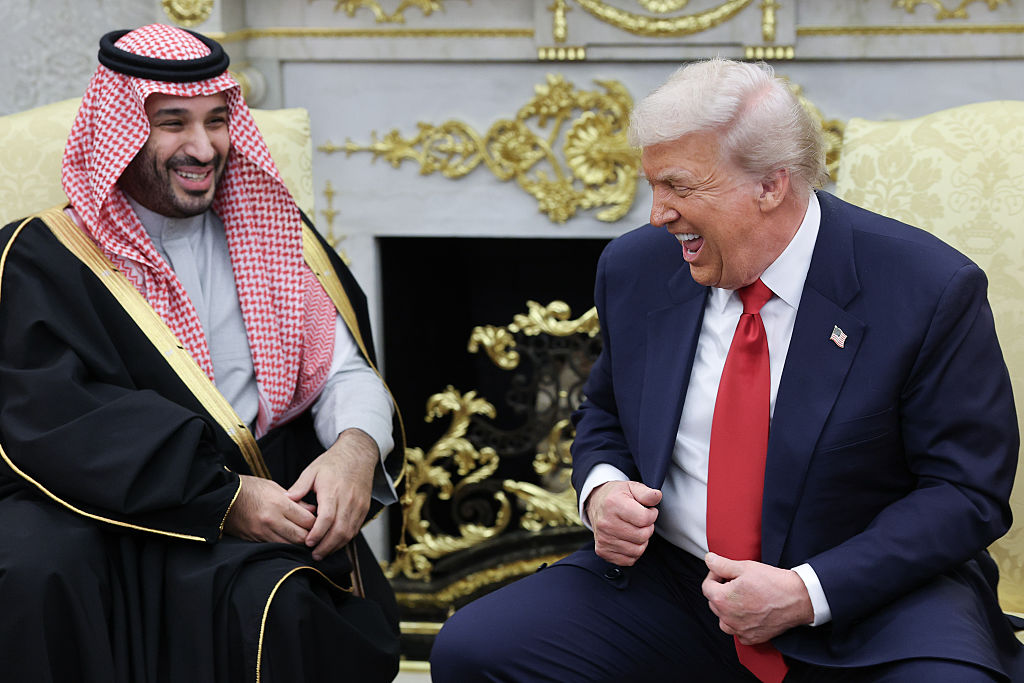As recently as a week ago, there was talk that Monday night’s virtual summit between President Joe Biden and Chinese Communist Party general secretary Xi Jinping was an opportunity to “reset” the US-China relationship. By the time the two leaders sat down in front of their video screens, the summit had been downgraded to a “meeting” and the White House made clear that little concrete agreement, and no breakthrough, was to be expected.
The meeting lived down to expectations, uneasily combining a more sober and realistic US assessment of the parlous state of bilateral ties with what seems a return to a pre-2017 model of surface bonhomie and references to the “the long-term work that we need to do together,” according to a senior US official. Despite the assurances that Biden wants meaningful and substantive discussions, from Taiwan to AI to hypersonic missiles, the flashpoints between Beijing and Washington continue to grow with little indication that the conflictual trajectory can be altered. The challenge facing Biden and his team is how to deliver on their stated goal of “outperforming” the Chinese while preventing an open clash between the two.
Beyond Xi ironically calling Biden his “old friend,” given Biden’s previous assertion that they are not, the three-and-a-half hour meeting did little to reduce any tension between Washington and Beijing. The sparse readout from the White House instead revealed two sides with largely irreconcilable differences over everything from Taiwan to trade. As a senior administration official noted just before the meeting, the administration is “not trying to change China through bilateral engagement [because] we don’t think that’s realistic.” Xi’s own rhetoric makes clear that the CCP sees itself in a continuous struggle with America and the liberal West, and that not only rejects, but seeks to undermine liberal norms abroad.
Biden and his team seem to be embracing the reality that the days of cooperative engagement with China are long gone. The mantra now is “managing the competition” and installing “common sense guardrails” to avoid armed conflict. Given Beijing’s repeated refusal to discuss crisis management or confidence building measures to improve maritime security, or to engage in discussion over nuclear weapons, calling for guardrails appears to be little more than wishful thinking.
More importantly, one must compete in a competition, and after Monday’s videoconference and contentious, if not failed meetings between administration officials and Chinese in Alaska and Beijing, the administration must come up with a realistic plan of not simply holding the line, but actually advancing American interests. That starts with a serious examination of the greatest risks in the US-China relationship, and honestly assessing what the US can and will do about them.
At the top of the list is Taiwan, where it seems the height of folly for Beijing to abandon its policy of long-term patience and instead risk an armed conflict with Taipei and Washington. Yet, Xi warned Biden yet again over increased US support for Taiwan. Beijing also is not willing to sit by and watch as other nations in Asia and around the globe pledge support for Taipei, thereby raising the costs of any potential Chinese intervention. Of particular concern to the CCP is Japan’s seeming willingness to get involved in a Taiwan crisis. For Biden, he must decide how far to push Beijing on Taiwan and whether he will seriously risk war with the world’s second largest military.
On AI, hypersonics, 5G and the like, Biden needs to come up with a serious plan to ensure American and allied industrial and technological competitiveness over the next generation. Here, Senate Majority Leader Chuck Schumer’s inclusion of the US Innovation and Competition Act in the annual defense bill, is a step in the right direction, and far better than the pork-laden $1.2 trillion infrastructure bill that Biden signed just before his meeting with Xi (none of which should benefit Chinese construction companies).
Biden’s new rhetorical realism is welcome, and he is right to focus on developing American domestic strength. Yet he, and those leaders who come after him, must embrace the uncomfortable reality that Beijing and Washington are not merely competing, but are in an increasingly adversarial relationship, as acknowledged recently by CIA director Bill Burns. Beijing aims at neutralizing the US position in Asia, weakening countries it considers adversaries, dominating the global economy so as to add further to Chinese wealth, and ensuring the survival of its authoritarian, Leninist model of control inside China.
American policymakers are just beginning to break a half-century habit of seeing “win-win” outcomes (as the Chinese would put it) from US-China ties. Avoiding self-delusion is hard enough, but the real work is just beginning. Monday’s Biden-Xi meeting will soon be forgotten as tensions once again rise. The question is whether America has a serious plan to meet the most critical test of its abilities since the 1940s, and possibly since the 1860s.
Michael R. Auslin is the Payson J. Treat Distinguished Research Fellow in Contemporary Asia at Stanford’s Hoover Institution and is the author of Asia’s New Geopolitics. He cohosts the Pacific Century podcast.



